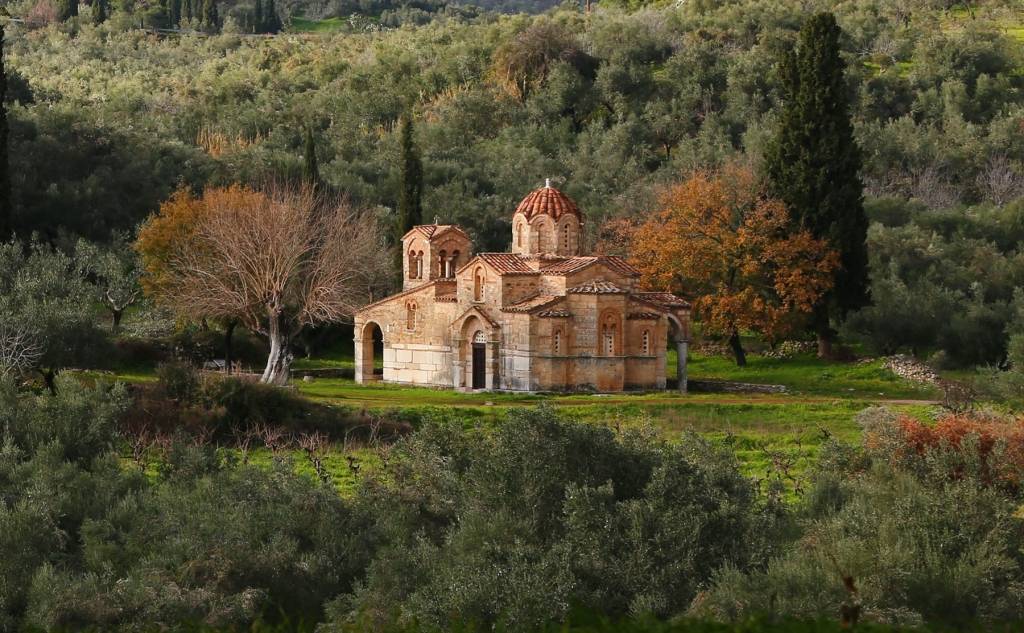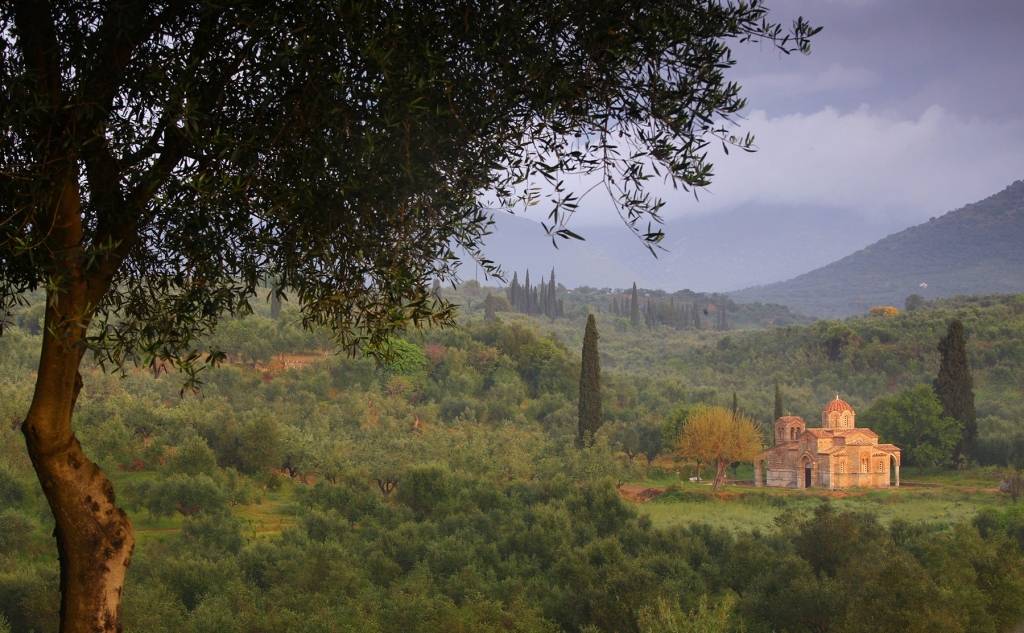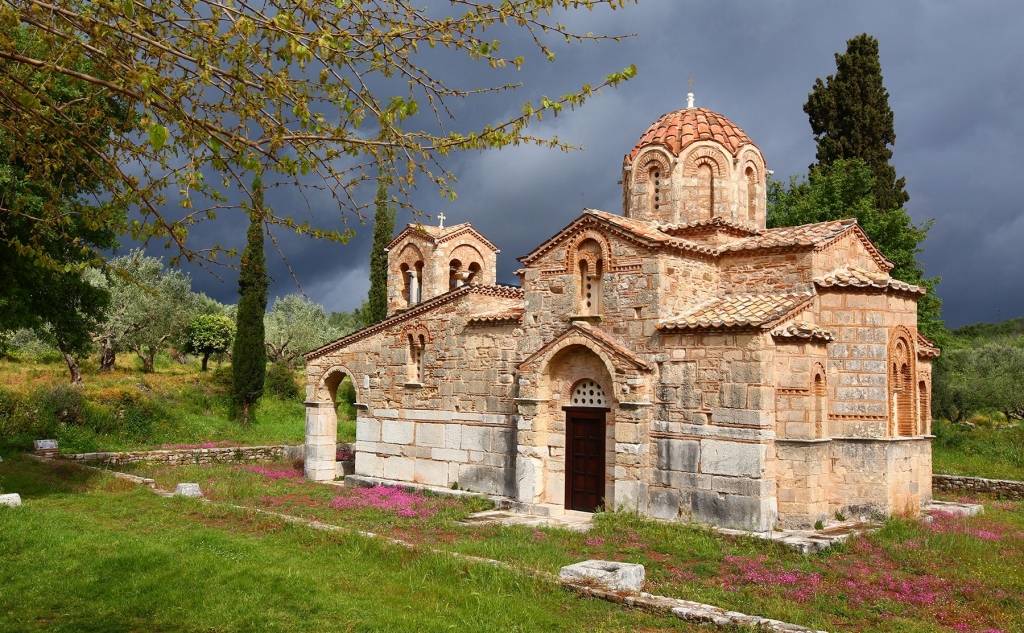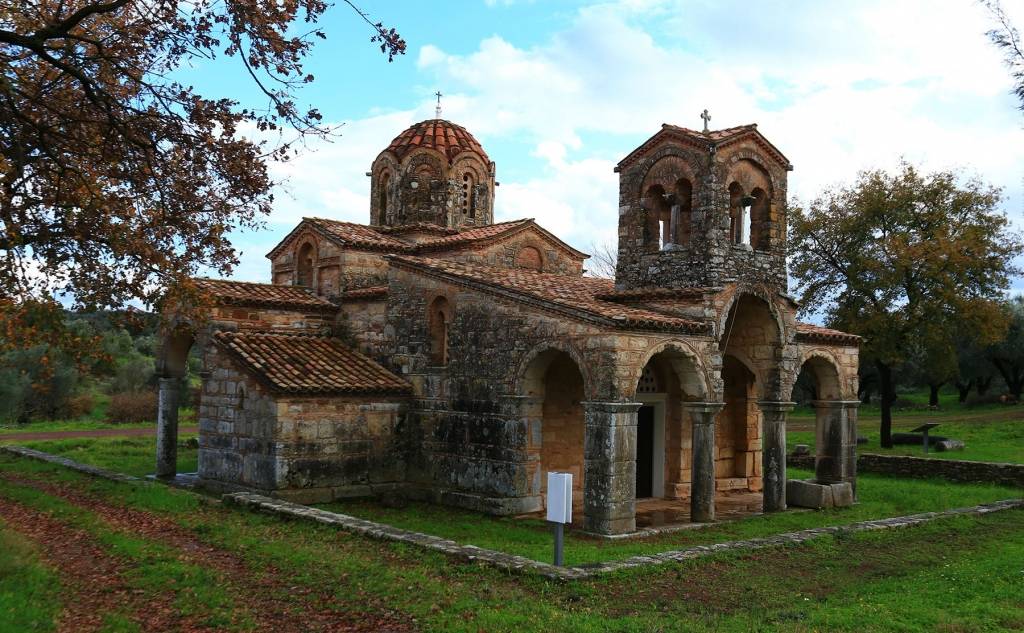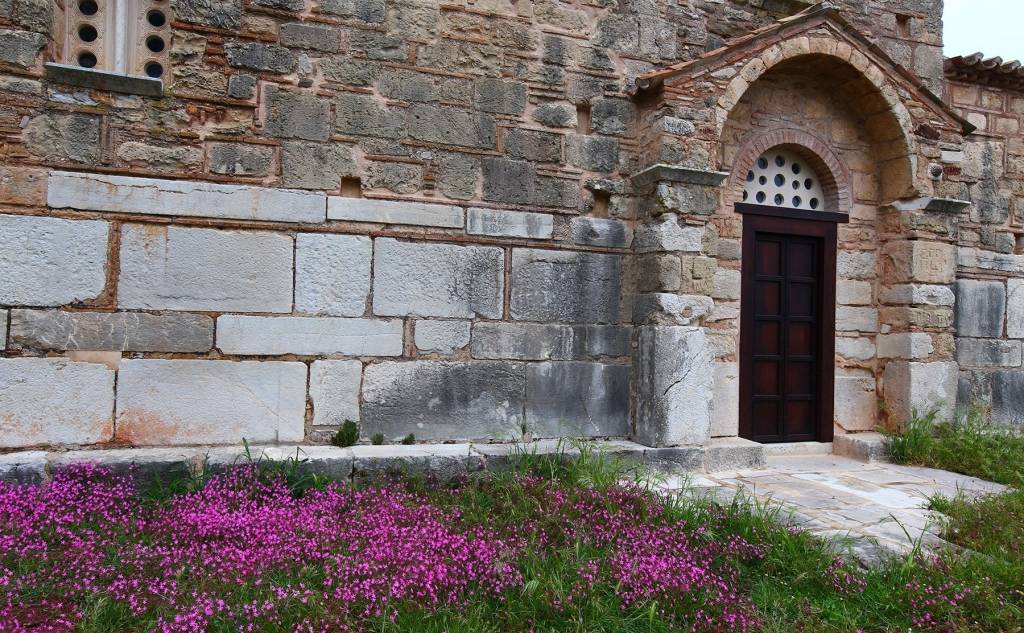Church Of Zoodochos Pigi
The temple of Zoodochos Pigi of Samarina is a verdant location a short distance from Kalogerorrachi. It is one of the most beautiful and well-preserved Byzantine monuments of the entire Peloponnese. The name Samarina came from the alteration of the Latin Santa Marie or, according to another opinion, because the temple was dedicated to Saint Mary of Egypt. According to the prevailing version, the church was built on the ruins of an ancient church. The church of Zoodochos Pigi is a member of the Vulkano Monastery and celebrates the Friday of Diakainisimos (the first Friday after Easter).
The church was built in the 12th century. The Catholicon of the abbey was believed to have been founded by Andronikos II the Paleologos to honour Patriarch Athanasios I, who came from Androusa.
Architecturally, the temple belongs to the cruciform inscribed with a dome of the double column variant with three anterior apses to the east. The dome rests on the walls that divide the spaces of the Holy Step and on two elegant monolithic columns. A narthex is attached to the west of the main church, on the west side of which an impressive collonaded porch is formed. The scattered columns in the courtyard area of the monument probably come from the southern propylaea. Also, the temple is supported by single- and double-gabled roofs. The walls of the temple are built with special care. The lower part consists of large rectangular stones, which come from ancient buildings, while the upper part consists of rich ceramic decoration.
Inside the church, impressive wall paintings of the so-called "academic trend" of the late 12th century with characteristic monumental representations of the life of Christ are preserved. The full-length saints’ figures dating from the 14th-15th century are maintained on the south wall. The compositions are designed with simplicity and symmetry. The forms are strict, while the faces are rendered plastically with a broad virtuosic design. Specifically, in the arch, the Infant Virgin Mary is depicted enthroned, and lower frontal Hierarchs. Among them, the uncommon depiction of the dead Christ in the shroud, perhaps a unique example in Byzantine monumental painting, stands out. In the dome, the figure of Pantocrator can be seen in a medallion, flanked by full-length Prophets in the lower zone of the drum, between the windows. The scenes of the Dodecaortos (the twelve most important celebrations in the Christian Orthodox Church) are developed in the arches of the edges of the cross, which impress with their monumentality. The Annunciation and the Presentation of the Virgin Mary are depicted in the north arch, the Vaiforos (hagiography displaying the entry of Jesus into Jerusalem) in the west, the Crucifixion in the drum of the west wall and the Descent into Hell (Resurrection) in the south arch. In the dome of the main Holy Step, the Ascension scene unfolds in two groups. The pictorial programme is completed by Hierarchs’ figures, the Communion of Saint Mary of Egypt by priest Zosimas, the Three Children in the furnace and some figures from the Old Testament.
The exquisite carvings of the altarpiece date to the second half of the 12th century and include animal figures and geometric designs crafted with great precision in the architraves. They are attributed to the famous "workshop of Samarina", whose works are also found in Laconia and Arcadia. The church floor is covered with large marble slabs that are sometimes demarcated by zones of marble mosaics. The floor is preserved in fragments in all its areas (Sacred Altar area, main church, narthex). Finally, on the south side of the narthex, there is a funerary archosol that was probably intended for the honourable burial of the temple’s founder and his family members.
In November 2011, the restoration works of the monument started independently by the 26th Ephorate of Byzantine Antiquities and were completed in December 2013. The works included re-tiling the roofs, the restoration of the ceramic decoration, and the installation of wooden doors. The frescoes were fixed and preserved, while the cleaning of the marble altarpiece revealed its high quality by showing traces of wax-mastic paint.




